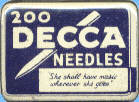The Gramophone...
|
The 'Gramophone' was invented in 1888 by the German-American Emile Berliner (1851-1929). The name gramophone came from an inversion of the name 'Phonograph' invented by Edison. The gramophone played flat disc records at 78RPM which are very similar to the vinyl LPs records today. The gramophone discs offered several advantages over the earlier phonograph. The discs could be more easily copied for manufacture by making a reverse image of the audio track (on a master disc) and pressing this pattern onto a 'blank' disc. This image could be transferring easily onto the disks to produce multiple copies from the a single original master. The gramophone discs could also be more easily stored than the rival phonograph's cylinder records. The78RPM gramophone recordswere made from shellac andcould easily be broken orcracked. They had a shortplaying time and sufferedfrom high surface noise withthegramophone needle requiring changing after just 15minutes of playing time. Thegramophone was very popularin the UK from 1900 rightthrough to the 1950s. In1948 the vinyl LPrecord was introduced with amuch longer playing time.These new LP records rotatedat a lower speed 331/3RPMand had much lower surfacenoise and were more durable. Thelast EMI 78RPM gramophone
record was recorded
in 1960,it featured Russ Conway playing 'Rule Britannia'. Today
the
gramophone is very much a collectorsitem with many fine examples
surviving.
The successor tothe 78RPM records (the microgroove vinyl
record) was popularthrough
the 1980s when eventually it was overtakenin sales by the more
convenient
Philips compact cassettetape.
Gramophone needle &
tins click here
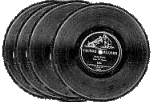 The
78rpm record was very popular0 throughout the
1920s/30s/40s
|
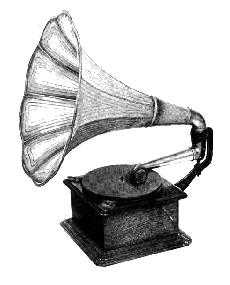 The Symphony
Victory c1910 The Symphony
Victory c1910 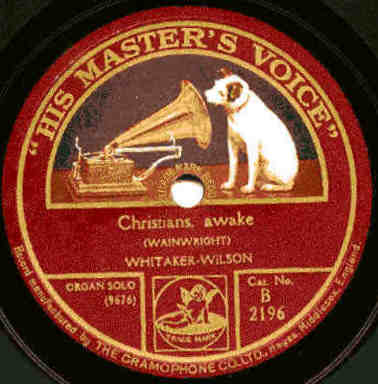 78RPM HMV Record
Label
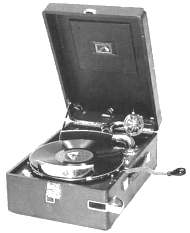 HMV Portable Gramophone Model 102 from 1931-1958 |
